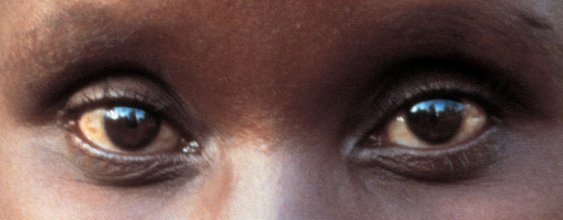This week we are pleased to welcome photographer Aric Mayer as our first guest correspondent at the New and Improved NCN.
“When we see them, we run. Some of us succeed in getting away, and some are caught and taken to be raped–gang-raped. Maybe around 20 men rape one woman. […] These things are normal for us here in Darfur. These things happen all the time. I have seen rapes too. It does not matter who sees them raping the women–they don’t care. They rape girls in front of their mothers and fathers.”
This is the statement of an unnamed victim quoted by prosecutor Luis Moreno-Ocampo this week in a hearing before the International Criminal Court. The prosecutor called for an arrest warrant to be issued for Omar Al Bashir, the president of Sudan, for 10 counts of genocide, crimes against humanity, and war crimes. Al Bashir’s weapons of genocide in Darfur are listed as rape, hunger, and fear.
The testimony achieves in one concise paragraph what photographs can rarely accomplish. First, the woman describes what she has seen in person, then what she and her community are suffering, and finally she attaches those horrifying images to the systematic raping of women in Darfur as a weapon for destroying the people and the fabric of their communities. It is the third part, the connection of individual experiences and individual crimes to the systematic destruction of society, that photographs do not do well on their own.
Despite the efforts of some of the world’s great photojournalists, the crimes of genocide in Darfur remain largely unseen in the West. The remote location, the political hurdles, and the extreme physical danger make Darfur nearly impossible to visit, much less to depict in photographs. But we can learn from another recent genocide in Rwanda.
The aftermath of the Rwandan genocide was visually graphic. Piles of hacked and/or burnt corpses covered the countryside for months afterwards. Buildings that had been burned down with hundreds of people inside of them stood untouched as the bones bleached in the sun. Even then, photographer Alfredo Jaar recognized that his best efforts to convey such horror were failing to communicate the breadth of the killing. In the end, he showed one photograph, “The Eyes of Gutete Emerita.” This image is an intense and intimate encounter with another human being, the eyes being the windows to the soul.
Gutete Emerita is, in this eternally frozen moment, looking at the remains of the church in which her husband and two sons were hacked to death with machetes by a Hutu death squad right in front of her. Now weeks later she has returned to the scene of their deaths and stands among bodies rotting in the African sun. Suddenly we, the viewers, are confronted not with a visual spectacle of the dead, but with the trauma, pain, and frailties of the living. Gutete’s eyes speak across time and space as a witness to violence and death on a scale that defies visual depiction. Jaar’s photograph brings us to contemplate the human soul in the face of such cruelty and pain. And Gutete’s eyes stand in as a witness of all crimes of genocide.
Currently in Darfur the genocide is being carried out in a very different manner from Rwanda. Rather than a spasm of violence, the genocide is perpetrated by attrition. Rape, hunger, and fear are slowly and steadily killing an entire population of people. That the rapes are frequently performed in public adds to the terrorizing effects of the crimes. In the West, rape tends to be a hidden form of violence, kept out of the public gaze, while in Darfur it is being used in a highly visible systematic way to destroy women, their families, and their communities. Dislocation and the constant threat of violence make it impossible for the Fur, Masalit, and Zaghawa groups to support themselves in an already difficult environment. Hunger and starvation are inevitable.
The request for an arrest warrant for Al Bashir is an important step towards generating a clearly articulated picture of how the Sudanese government has sustained and perpetrated genocide while the world knows that it is happening. The scarcity of visual evidence of these crimes in the western media should be no excuse for our lack of understanding of the problem. It may perhaps even help the cause. As in Alfredo Jaar’s images from Rwanda, we can bypass the spectacle and get straight to the systematic structures that keep the genocide occurring. Prosecutor Moreno-Ocampo’s document presented to the ICC creates a clear picture of how the genocide has been implemented and sustained. You can read a synopsis and download the full text here.

i think our governments should do some more proactive task in Darfur. the UN is not doing a very good job in resolving the crisis in Darfur.
the internation community should be more proactive in dealing with the situation in Darfur. we should not only send food aids but we also need to influence the political policies in the Darfur region.